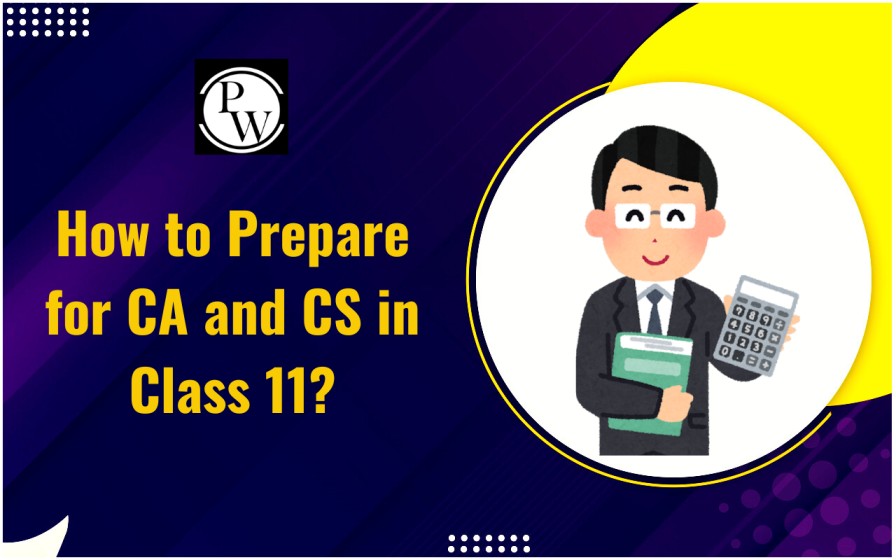
Central Problems of an Economy: In the world of economics, every society faces a common set of challenges known as the Central Problems of an Economy. These problems boil down to three fundamental questions: What to produce? How to produce? And for whom to produce? At the heart of these queries lies the concept of scarcity – the unavoidable reality that resources are limited while human desires are boundless.
This inherent gap between what we have and what we want gives rise to the central problems as societies grapple with allocating their finite resources to satisfy the infinite array of human needs and wants. In this discussion, we'll delve into these central problems, exploring the complexities they entail and the various approaches societies employ in tackling them.What are the Central Problems of an Economy?
At the heart of every economy, there are three main challenges we need to tackle, known as the central problems of an Economy. Let's check them in brief:1. What to produce?
When a country decides what to produce, it's like a chef deciding what dishes to cook for a big dinner party. With limited ingredients and time, the chef must choose which recipes will please the guests the most. Similarly, in an economy, resources such as land, labour, and capital are limited, so we can't make everything. We have to pick and choose what goods and services are most important to produce.This decision involves considering the needs and wants of the people. For example, should we focus on producing more food to feed everyone, or should we invest in building better infrastructure for transportation? It's a balancing act between necessities like food, shelter, and healthcare and wants like entertainment and luxury items.
Additionally, the decision of what to produce is influenced by factors like technological advancements, market demand, and government policies. For instance, if there's a growing demand for renewable energy, the economy might prioritize investing in solar or wind power technologies over traditional fossil fuels.
2. How to produce?
Once we've figured out what to produce, the next question is how to make it. This is like a builder deciding which tools and materials to use when constructing a house. In economics, we have to choose between different production techniques, such as labour-intensive or capital-intensive methods.Labor-intensive techniques rely more on human effort and less on machinery. This can create more jobs and opportunities for people to work, but it might not be as efficient or cost-effective as using machines.
On the other hand, capital-intensive techniques involve using advanced machinery and technology to produce goods. While this can lead to increased productivity and efficiency, it may also result in fewer job opportunities for workers.
The choice between these techniques depends on factors like the availability of skilled labour, the cost of capital, and the level of technological development in the economy.3. For whom to produce?
Once goods and services are produced, we have to decide who gets to enjoy them. This is like a party planner deciding how to distribute limited party favours among the guests. In economics, it's about allocating the goods and services produced to different groups in society.This decision involves considerations of equity and fairness. Should resources be distributed equally among everyone, or should they be allocated based on people's ability to pay? Should priority be given to basic needs like food and healthcare, or should there be room for luxury and discretionary spending?
The distribution of resources also affects economic inequality. If resources are concentrated in the hands of a few, it can lead to social unrest and dissatisfaction. On the other hand, if resources are distributed more evenly, it can contribute to a more stable and prosperous society.
Governments often play a role in determining how resources are distributed through policies such as taxation, social welfare programs, and regulations on income and wealth distribution.
Moreover, the central problems of an economy are complex issues that require careful consideration and decision-making. By addressing these problems effectively, we can work towards building a more efficient, equitable, and sustainable economic system.Also Read: Economics Project
Causes of Economic Problems
The economic problems we face stem from various causes that impact how resources are used and distributed in society. Let's check them in detail:Scarcity of resources: Picture this: you have a small jar of cookies, but there are more friends at your party than cookies in the jar. Similarly, in the economy, we have limited resources like workers, land, and money, but there are a whole lot of things people want. So, no matter how much we try, we can't satisfy everyone's desires because we simply don't have enough resources to go around.
Unlimited human wants: Ever notice how when you get something you've been wanting, you start thinking about what else you want? That's because humans have an endless list of desires. We always want more – it's just how we're wired. So, even if we had all the resources in the world, there would still be someone out there wanting more. It's like trying to fill a bottomless pit of wishes – there's just no end to them.
Alternative uses: Resources are like Swiss Army knives – they can be used for lots of different things. Take petrol, for example. It's not just for cars – it's also used for generators, machines, and more. So, when we decide to use petrol for one thing, we're giving up the opportunity to use it for something else. It's like having one piece of play equipment and having to choose between a swing or a slide – you can't have both, so you have to pick wisely.
Inefficient allocation: Sometimes, we don't use our resources in the best way possible. It's like having a bunch of tools but not knowing which one to use for the job. This can lead to wasted resources or things not getting done properly. For example, if we don't allocate enough money to fix roads, they'll stay bumpy and unsafe, which nobody wants.
Market failure: The market is like a big, bustling marketplace where goods and services are bought and sold. But sometimes, things don't work as smoothly as they should. Maybe there's not enough competition, or prices are too high. This can lead to resources not being used efficiently, like if there's only one store selling a product and they can charge whatever they want.
Government intervention: Imagine the government as the referee in a game – they make sure everyone plays fair and follows the rules. Sometimes, they need to step in to make sure resources are used properly. This could mean passing laws to protect the environment or providing subsidies to help struggling industries.
External factors: Just like unexpected rain can ruin a picnic, external factors like natural disasters or wars can mess up the economy. They can disrupt the flow of resources and throw things off balance. For example, a hurricane might destroy farmland, leading to food shortages and higher prices.
Therefore, these causes of economic problems highlight the challenges we face in managing our resources and ensuring everyone's needs are met in an ever-changing world.Central Problems of an Economy Example
Let's look at the following example illustrating economic problems in everyday life for easy understanding for students: (Chit-chat at the dinner table) In this scenario, let's imagine a family of four: Sarah, the mother. Mike, the father, and their two kids, Lily and Jake.Lily: Mom, can we have spaghetti for dinner tonight?
Sarah: Sure, Lily. But we're running low on tomatoes, and the grocery store is closed now. I was planning to make a tomato-based sauce.
Jake: I want burgers instead!
Mike: Burgers sound good, but we don't have enough ground beef left. And we're also low on lettuce and tomatoes for toppings.
Sarah: Hmm, it seems like we're facing a shortage of ingredients for both options. We'll have to make a decision about what to cook based on what we have available.
Lily: Can't we just order takeout?
Sarah: Ordering takeout could be an option, but it might cost more, and we're trying to stick to our budget this month.
Mike: What about making grilled cheese sandwiches instead? We have plenty of bread and cheese left.
Sarah: That's a great idea, Mike! Grilled cheese sandwiches it is, then. We'll save the spaghetti and burgers for another day when we have all the ingredients we need. (At dinner)
Lily: Mom, these grilled cheese sandwiches are delicious!
Jake: Yeah, thanks, Mom!
Sarah: I'm glad you both like them. Sometimes, we have to be creative and flexible with our meal choices when we're facing limitations in our resources. It's all about making the best use of what we have.
In this example, the family encounters the economic problem of scarcity as they have limited ingredients available for dinner options. They must make a decision about what to cook based on the resources they have and their budget constraints, highlighting the central problem of what to produce given limited resources.
Also Read: Important Questions for Class 12 Macro Economics
How to Address These Central Problems of an Economy?
To tackle the central problems of an economy, there are various strategies that can be employed:
Monetary policy: Central banks can use monetary policy tools like adjusting interest rates and implementing quantitative easing to manage inflation and stabilize the economy. For example, they might lower interest rates to encourage borrowing and spending during times of economic downturn.
Fiscal policy: Governments have the power to influence the economy through fiscal policy, which involves taxation and spending. By adjusting tax rates and government spending levels, authorities can stimulate or cool down economic activity as needed. For instance, they might increase spending on infrastructure projects to boost employment and stimulate growth during a recession.
Trade policy: Governments can shape economic outcomes by implementing trade policies, such as tariffs and trade agreements. These measures can either promote or restrict trade with other countries, impacting industries and consumers domestically. For example, imposing tariffs on imported goods can protect domestic industries but may also lead to higher prices for consumers.
Structural reform: Governments can enact structural reforms aimed at improving the efficiency and flexibility of the economy. This might involve reforms in areas like the labour market, welfare system, or regulatory environment. For instance, implementing policies to streamline business regulations can make it easier for companies to operate and create jobs.
Financial regulation: Governments can regulate financial institutions to ensure stability and prevent financial crises. This includes measures such as setting capital requirements for banks and monitoring risky financial activities. By maintaining a stable financial system, authorities can help support overall economic stability and growth.
These approaches represent different tools in the toolkit for addressing the central problems of an economy, offering policymakers a range of options to prepare for economic challenges and promote prosperity.
Also Read: How To Attempt Class 12 Economics Exam?
Furthermore, understanding the central problems of an economy is vital for navigating the complexities of resource allocation and economic decision-making. By addressing scarcity, unlimited human wants, and alternative resource uses, societies can develop strategies to promote economic growth and improve the well-being of their citizens.
Join PW Commerce Online Course and unlock your potential with quality education and dedicated learning support.
| Commerce Related Topics | |
| Index Numbers | Likert Management System |
| Fiscal Policy | Father of Economics |
| Joint Venture (JV) | Endorsement of Instruments |
| Types of Insurance | Cost Sheet Format |
Central Problems Of An Economy FAQs
What are the central problems of an economy and give examples?
How many types of economic problems are there?
How are central problems solved in different types of economies?
What to produce examples?
How do economic systems solve central problems?










